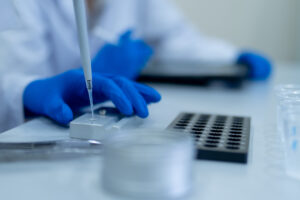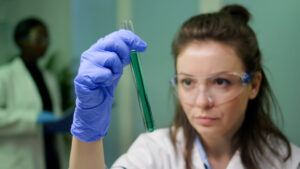Sibling DNA Testing: what is it?
Sibling DNA testing compares the DNA (hereditary genetic material) of two people to see if there is some probability that they are biological siblings (sister or brother). They may be full siblings, half-siblings, or not at all related.
Primarily, the goal of sibling DNA testing is to determine or confirm paternity, that is, to see if the two persons being tested share a biological father. In a legal context, this may be needed to secure Social Security survivor benefits for a child, or to determine the child’s familial status for some inheritance. Sibling DNA testing is also often done to prove biological relationships for immigration applications, in the United States and Britain, although it should be noted that in the State of New York, it is not allowed.
When a possible biological father is no longer alive, and is unwilling or unavailable to participate in DNA testing, sibling DNA testing can be performed as a near substitute. While it is not 100% accurate, it can show a very likely close relationship based on matching DNA.
In rare cases, if a child was given up for adoption, for instance, sibling DNA testing may be used to determine whether someone else has the same biological mother. This might occur years after the adoption took place.
Is sibling DNA testing accurate?
Sibling DNA testing is not as conclusive as paternity DNA testing. It can only report the most statistically likely biological sibling relationships based on the DNA testing evidence provided. If either biological parent of a sibling being tested is available and willing to be tested, this does help with the analysis, and it may boost the result certainty. In general, the more genetic testing participants, the better the chance for a conclusive sibling DNA diagnosis result.
The different types
There are essentially three possible sibling DNA testing types or three statistical analyses. They are based on the relationship of the parent or parents to the two people being tested.
When both biological parents are shared, the two people are full siblings. They share approximately 50% of the same genes. When only one biological parent is shared they are half siblings, sharing about 25% of the same genes.
Full siblings versus unrelated:
For this type of analysis, DNA is compared to find the probability of the two tested people having the same biological mother and father, versus having no biological relationship.
Full siblings versus half-siblings:
For this type of analysis, DNA is compared to find the probability of two tested people who are known to have the same biological mother, to determine the probability that they also have the same biological father. When the mother is known, if available, DNA testing samples from the mother will greatly increase the accuracy of the results.
Half siblings versus unrelated:
In this type of sibling DNA testing, two people with different biological mothers are attempting to determine the probability that they have the same biological father. If available, DNA testing samples from at least one and preferably both mothers will very much increase the accuracy of the testing results.
Can two biological siblings have different DNA results?
Yes. That is why sibling DNA test results aim for an at-best 99% accuracy rate.
Even if all parties involved have come from the biological background that their family history would indicate on the surface, there are slight variations in the DNA of eggs belonging to the same mother and sperm belonging to the same father, so that the same set of parents could have two children with somewhat different DNA.
Genetic recombination: how does it shuffle the deck?
When sperm or eggs are created in the body, the cells split the number of chromosomes in half, from the normal 46 to 23. The chromosomes line up two by two, as if for a partnered dance. They then exchange particles of genetic information before the egg or sperm cell is formed.
Every single fully formed egg or sperm will then have its unique gene cocktail that is a degree or two different from the next, seemingly identical egg or sperm.
Thereafter, during fertilization, a mature sperm and egg will combine their respective unique 23 chromosomes each to form a complete and entirely individual genetic bundle of 46.
Every child is then heir to a new and one-of-a-kind gene combination because they inherit a set of DNA from each biological parent that is just a shade distinct from any other set. Siblings may only share about 50% of the same DNA, even fraternal twins.
How do I know if sibling DNA testing is right for me?
It is a matter of individual choice, depending on whether your interest is personal curiosity or based on a legal need. If you are interested in biological relationships from a health and hereditary disease standpoint, you may be considering this type of testing after a discussion with your doctor or healthcare provider. Sibling DNA testing is unlikely to be covered by your healthcare system, but there are private genetic and DNA testing options available.



